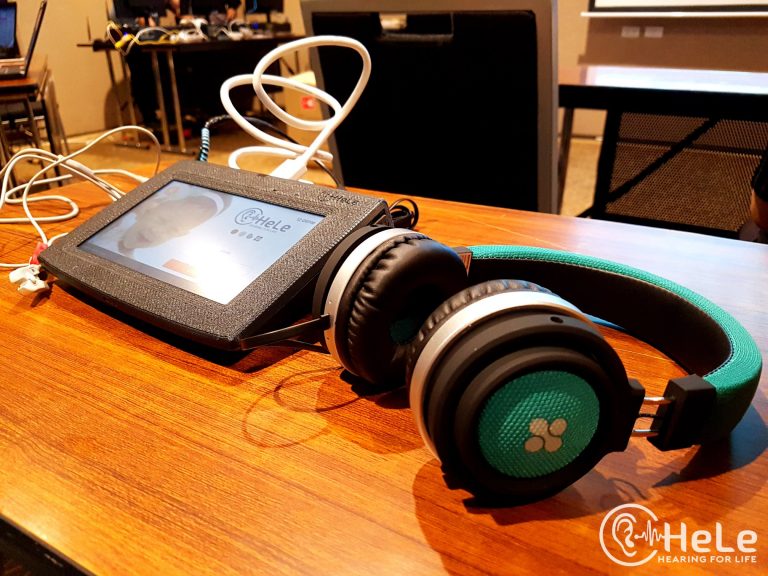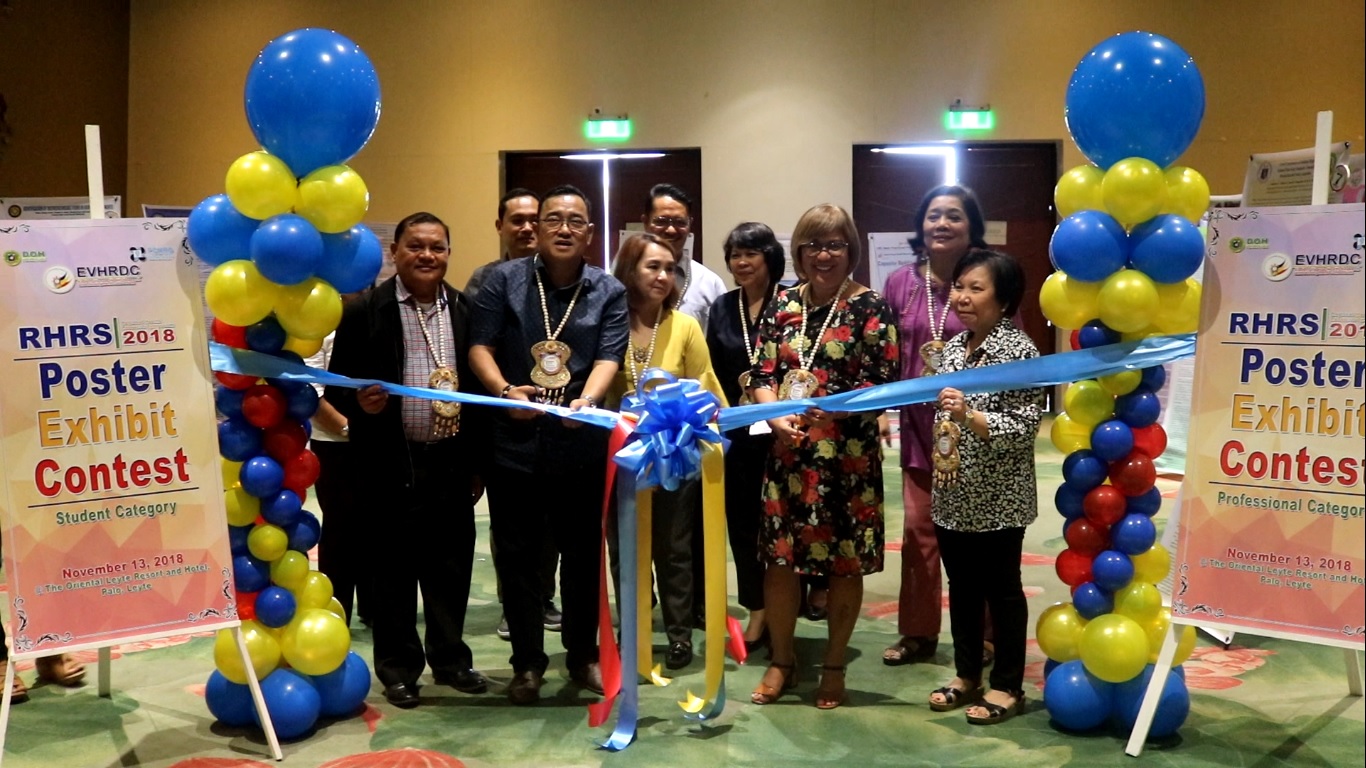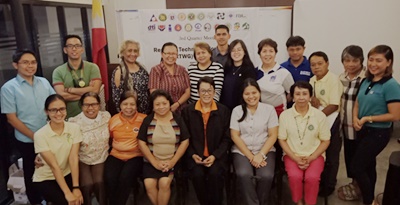Featured Videos
News
- Details
- Written by Commission on Higher Education (CHED RO 8)
- Category: News
- Hits: 1134
Manila, Philippines – Researchers from the University of the Philippines – Manila (UP Manila) and the University of California, Davis (UC Davis) are developing better newborn hearing screening technologies, which will pave way for early detection of hearing impairment among Filipino infants.
 |
The project Hearing for Life: Increasing the Rates of Newborn Hearing Screening with Novel Technologies and Telehealth (HeLe Project) is set to produce an innovative hearing screening device and telehealth technologies. This will include e-learning modules for training newborn hearing screeners and users, an electronic medical record module for newborn hearing screening, a tele-referral system, and a newborn hearing screening registry. These will allow community-based early hearing screening in Rural Health Units (RHUs) that are easily and locally accessible.
The HeLe Project is funded by the Commission on Higher Education (CHED) through the Philippine-California Advanced Research Institutes (PCARI) Project. The CHED-PCARI is a government initiative that aims to advance the country’s capacity for research and development by addressing societal-scale problems related to health innovation and translational medicine (HITM) and information infrastructure development (IID).
A 2013 study led by HeLe Project Head Dr. Charlotte Chiong, director of the Newborn Hearing Screening Reference Center (NHSRC) at the UP Manila National Institutes of Health found that “at least 8 profoundly hearing deaf babies are born every day in the Philippines or one deaf baby born every three hours”. Statistics, however, also shows that less than 10% of Filipino babies each year are screened for hearing loss due to limited number of facilities and the high cost of screening devices.
Lead Researcher Dr. Philip Fullante said the HeLe hearing screening device, together with the telehealth technologies, is envisioned to be a cost-effective model for conducting newborn hearing screening that will be affordable to the government. “This will enable the local government units to deploy the system to its regional health units and even barangay health centers, thus capturing close to 100%, if not all of the live births in the country for newborn hearing screening,” Fullante added.
- Details
- Written by Mr. Brayan A. Bornias, SLSU
- Category: News
- Hits: 1233
The Eastern Visayas Health Research and Development Consortium (EVHRDC) together with the Department of Health Regional Office VIII (DOH RO8) conducted its 2018 Regional Health Research Symposium (RHRS) on November 13, 2018 at The Oriental Hotel, Palo, Leyte. This activity is the 1st Region-wide contest for Oral Research Paper Presentations and Poster Exhibits both for professional and undergraduate categories where modest cash prizes are given to the winners.

Dr. Minerva P. Molon, the Regional Director of DOH RO8, in her opening remarks, pointed out that this activity will not just promote the consortium activities but also to motivate researchers to do better in their research career so that communities could benefit from utilizing their research outputs.
“The theme of this year’s symposium addresses equity which is anchored on the research agenda and priorities in Eastern Visayas. I motivate interested parties to submit proposal with health-related researches for possible funding.”
 |
 |
Mr. Willard N. Riveral, Chair of EVHRDC Research Information Committee (RIC), introduced the presenters, guests and visitors from various state universities, public and private government agencies. There were a total of 78 participants who attended the symposium. The different committees of the consortium were also recognized as well as the EVHRDC staff, guests and speakers.
 |
 |
| "Ceremonial opening of poster exhibit graced by Dr. Molon and guests” | |

Mr. Leonido Olobia, Research Program Coordinator and Chair of Research Management Committee, emphasized that this symposium is the first ever Regional Health Resarch Symposium in Eastern Visayas and through DOH and the collaboration of DOST-EVHRDC, this was made successful. Dr. Olobia also pointed out the purpose of this symposium.
“On behalf of the DOH Region 8, I would like to thank the members of the consortium for making this symposium a successful one. The purpose of this activity is not just to promote the activities of the consortium but also to make use of the researches related to health because based on the review, there were a lot of talented researches from students to professional category here in Region 8.
 |
 |
Dr. Noel R. Juban, the keynote speaker of this year’s RHRS quoted “In order to try research, one should have a supporting environment. As a researcher, one should not end in presentation only; it has to be published in a journal for wide dissemination of such research.”
After review and evaluation, the following were announced as winners;
| Oral Research Presentation Contest | |
|---|---|
 |
 |
| Prof. Maricel A. Gomez, 1st Place Winner of Oral Research Presentation from Leyte Normal University delegates for Professional Category with research title: “Men Who Have Sex with Men: The Naked Truth Among Male College Students” | Mr. Richard Luke R. Abletes, 1st Place Winner of Oral Research Presentation from Eastern Visayas State University delegates for Student Category with research title: “Participation and Problems Met in the Implementation of Zero Open Defecation Program in Selected Barangays of Salcedo, Eastern Samar” |
| Poster Exhibit Contest | |
|---|---|
 |
 |
| Mr. Ginbert P. Cuaton, 1st Place Winner of Poster Exhibit Contest from Leyte Normal University delegates for Professional Category | Ms. Renalyn M. Yabor, 1st Place Winner of Poster Exhibit Contest from Eastern Samar State University delegates for Student Category |
 |
 |
Dr. Edgardo E. Tulin, Member of EVHRDC-EXECOM and Visayas State University (VSU) President, in his closing remarks, thanked the DOH and DOST through the EVHRDC Family in making this event a successful one. Dr. Tulin advised the young professionals to improve their research outputs to be utilized by the communities and make more health-related researches relevant in the future.
“With the active involvement of DOST and partner state universities and colleges, I’m sure we will be able to make more health researches relevant in the future in terms of the demands. I hope that those who were not able to get the awards, will do better next time because this is just part of making us aware on what research is all about. We say “Research is wealth”, thus we are encouraged to make our researches productive and beneficial to the health of human beings.”
- Details
- Written by National Nutrition Council RO VIII
- Category: News
- Hits: 1358
To strengthen the capacities of the local planning core team, the National Nutrition Council VIII trained thirty-six (36) nutrition advocates particularly the nutrition action officers, municipal planning officers, budget officers and nutritionist dietitians on nutrition program management (NPM). The training course on nutrition program management was conducted from 17 to 21 September 2018 at the Ocean View Hotel, Tolosa, Leyte.
 |
The NPM, a yearly training for nutrition officers and advocates provided discussions to include: (1) Understanding Food and Nutrition, (2) Advancing Core Values and Skills of Nutrition Workers, and (3) Integrating Nutrition Program Management in Local Governance and Development System. This year, the training included emphasis on the Philippine Plan of Action for Nutrition (PPAN) 2017-2022, an integral plan of the Philippine Development Plan. Further, to provide a clearer picture on the implementation of PPAN, the participants were also oriented on the DILG Circular No. 2018-42 and DBM Local Budget Memorandum No. 77. The training workshop provided the local government units with the menu of nutrition related interventions through the identification of strategies and programs preferred for funding, and particularly, to intensify quality nutrition through the implementation of PPAN 2017-2022.
- Details
- Written by National Nutrition Council RO VIII
- Category: News
- Hits: 1034
Palo, Leyte -In order to promote and improve the nutritional and health status among government workers and its clients, the Regional Technical Working Group on Nutrition endorses to the Regional Nutrition Committee the policy statement on nutrition program for government workers of the National Nutrition Council during its Third Quarter Meeting held on 20 September at Seafood and Ribs Warehouse, Palo, Leyte.
 |
Dr. Catalino P. Dotollo, the NNC VIII Regional Nutrition Program Coordinator shared that obesity among adults is increasing. National Nutrition Survey (NNS) 2015 revealed of 31.10 prevalence of obesity among 20 years old and above. Likewise, DOST-FNRI (2016) prevalence of selected health and nutrition conditions among adults, by occupation showed that officials (37%) and professionals (32.1%) and clerks (29.6%) are among the top occupation with high prevalence of obesity. On the other hand, the top occupation with low physical activity include: clerks (56.8%), professionals (55.6%), special occupation (52.6%) and officials (50.1%). Further, the survey also revealed that the mentioned occupations are also listed having high rates of hypertension, high fasting blood glucose and high cholesterol levels.
To contribute to efficient bureaucracy, NNC released policy statement for the improvement of nutritional and health status of state workers by reducing or no further increase in obesity and non-communicable diseases through NNC GB Resolution No. 5, series of 2018. Specifically, the policy aimed to build on existing wellness and healthy lifestyle programs, to set up a mechanism for assessing and monitoring nutritional status of government workers, to design guidelines to offer opportunities for government workers to be informed about proper nutrition, to offer healthy food environment in the workplace, to promote and sustain physical activity and reduce sedentary work while in the workplace and to give basis for other nutrition services for government workers. Components used to effectively carry out the program will include: (1) nutrition promotion, (2) healthy food and work environment, (3) behavior modification strategies, and (4) food systems interventions.
- Details
- Written by Mr. Brayan A. Bornias, SLSU
- Category: News
- Hits: 1766
The Eastern Visayas Health Research and Development Consortium (EVHRDC) through the support of the Department of Health (DOH) and the Department of Science and Technology (DOST) conducted the Strategic Planning 2019-2022 at the Summit Hotel, Marasbaras, Tacloban City from September 24-26, 2018.
A series of workshops included diverse topics on role clarification, problem analysis, review of vision and mission, Philippine National Health Research System (PNHRS) strategic objectives, identifying performance indicators, setting of annual performance targets, annual operations planning, setting of prioritization criteria, annual prioritization of Regional Unified Health Research Agenda (RUHRA), and identifying priority topics.
 |
 |

DOH Research Program Coordinator and Chair of the EVHRDC Research Management Committee (RMC) Mr. Leonido P. Olobia congratulated the consortium for the three awards garnered during the 12th PNHRS Week Celebration. He also emphasized the contribution of the consortium in advocating the health-related researches in the regional and national health goals.
“I would like to congratulate those who gained awards during the 12th PNHRS Week Celebration. To further develop the health researches in the region, it is suggested that the EVHRDC has to have its own publication journal to showcase the health-related researches and address these to the community in solving health-related problems”, Mr. Olobia said.

DOST Regional Office VIII Assistant Regional Director Engr. Ernesto M. Granada, in his welcome remarks, highlighted the importance of making a strategic plan to identify solutions to health problems in the region.
“We should address the current health problems in the region and come up with a comprehensive analysis and hopefully, we will come up with a strategic plan that identifies solutions to health problems in Region 8”, Engr. Granada said.

Dr. Zhamir Umag, a Master in Public Management with major in Health Research Development and a Doctor in Medicine, spearheaded the workshop activities as the Resource Person in making a strategic plan. Dr. Umag also took part as the Planning Facilitator during the Region 10 Strategic Planning. He assisted the consortium in writing up with a new Strategic Plan for the period 2019-2022. The process involves the participation of all members and chairs of the committees including the Research Information Committee (RIC), Ethics Review Committee (ERC), Research Management Committee (RMC), Capability Building Committee (CBC), and the Structure Organization Monitoring and Evaluation Committee (SOMEC). The process of planning was also assisted by Dr. Teddy S. Dizon.

Dr. Virgildo E. Sabaldo, Chair of the EVHRDC CBC, also served as the resource speaker. He presented the PNHRS Strategy Map and presented the review on the vision, mission and core values of the consortium.
One of the highlights during the planning was the revision of the vision and mission of the consortium. Indeed, everybody was sharing each other’s ideas having one purpose which is to improve the processes and systems of the consortium necessary for the advocacy and support of the health research culture not just in the region but also to the national and global health goals.
 |
 |
 |
Mr. Olobia, in his closing remarks, expressed his gratitude to all the committees, facilitators, organizers, guests and the resource speakers who joined the planning and congratulated everyone in coming up with a strategic plan for the period 2019-2022 from the three-day workshop.
“Personally, I would like to thank everybody for attending this three-day workshop in making our new strategic plan for the period 2019-2022. Indeed, it was a very intensive brainstorming and a productive planning activity. Thank you so much”, Mr. Olobia told.
Mr. Olobia also gave a rundown of the workshops accomplished within the three-day activity. He also highlighted the new vision of the consortium which is “A transformative health research consortium in Eastern Visayas geared towards the attainment of local and national health goals”.









